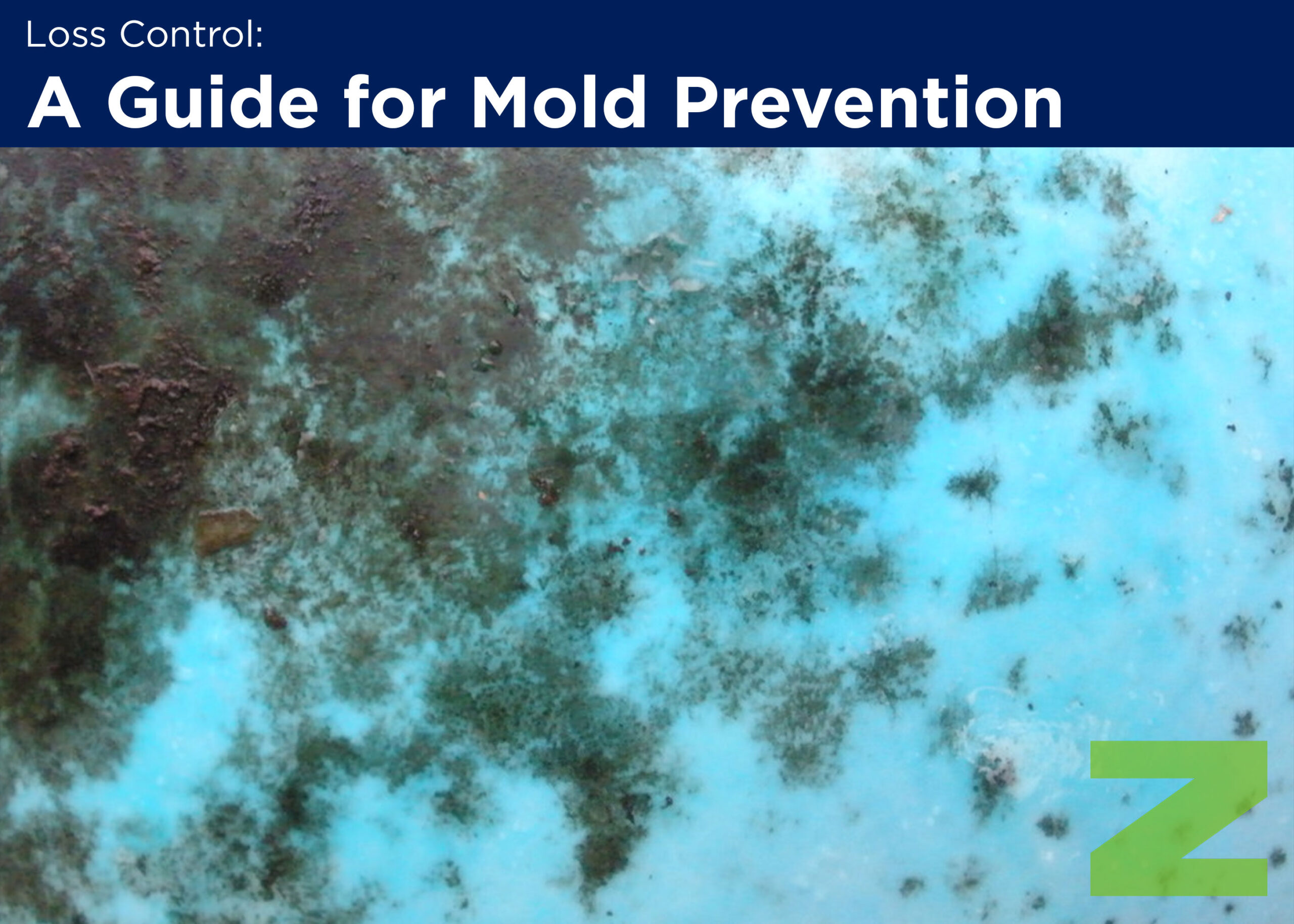A Guide for Mold Prevention
Your building is one of your biggest assets, but it can easily be the last thing on your mind when you think of loss control. Preventing mold growth in your buildings takes just one action: eliminating moisture. Easier said than done, of course, says Industrial Hygenist Steven Shaffer. But controlling water (pooling water, as well as high humidity and condensation) can keep your building safe from excessive mold growth.
Mold is everywhere, and there is no easy way to eliminate all the spores around us. The trick is to keep mold from taking over the environment. The only practical way to do that is to control the moisture that mold needs to survive and reproduce. If left uncontrolled, mold problems can lead to health issues for your employees, including allergic reactions, asthma and other respiratory problems.
Controlling Moisture
Today’s well-sealed, tight buildings can contribute to moisture problems under certain circumstances: if the building has design flaws, if the HVAC system is not operating correctly, or if internal or external conditions allow moisture to seep in.
Here are some steps that Steven recommends to help prevent water intrusion and to make corrections if mold does get a foothold in your building:
To Begin
- Conduct inspections frequently. Look for evidence that water is causing problems. Do you see staining or wet spots on carpets, ceiling tiles or walls?
- Use the smell test: Does the basement or storage closet smell musty? If so, do further exploration.
- Check your humidity. If levels are above 60 percent, conduct additional evaluations to determine why.
Next Steps
- Clean up any mold immediately on hard surfaces using dish soap and water, and replace any absorbent materials where mold is growing, such as ceiling tiles, window coverings or upholstered office furniture.
- Make any obvious fixes, such as preventing water intrusion, and quickly cleaning and drying any damp or wet materials.
- Add insulation to areas where condensation forms such as windows, pipes, exterior walls and other areas where cold and warm meet.
- Get rid of carpet on concrete floors and in areas that are often wet, such as near sinks and water fountains.
- Don’t install vinyl wall covering over drywall. Vinyl traps water, not allowing surfaces to dry out.
- Check landscaping and outdoor areas around the building to be sure water isn’t funneling toward your building.
- Set your HVAC system to remove extra humidity whenever you introduce water into your environment, such as when you clean carpets. Make sure the carpets are dry within 24 hours and don’t rely on fans to do the drying; in today’s tight buildings, fans direct the water into the building’s airflow system where it remains a problem.
- Use this guide from the United States Environmental Protection Agency as a resource to prevention and remediation.
(Content originally provided by EMC Insurance Companies)





